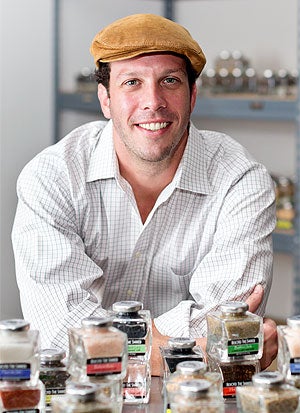The Knowledge is Power Program (KIPP), the intensive public school program, was launched in 1994 by teachers Michael Feinberg and Dave Levin. The organization predominantly serves low-income American students from African-American and Latino families. These are the children who often fall through the cracks of America’s education system, but KIPP focuses on ensuring these students go to college, graduate from college and move on to rewarding careers.
KIPP is working to close the achievement gap between rich and poor students and its success rate has been notable: Over the course of 20 years, it has grown into a network of 141 American public schools filled with 50,000 students. The KIPP education model — with rigorous hours and demanding academics — is now being replicated in schools around the world.
Knowledge@Wharton sat down with co-founder Feinberg to understand how KIPP began, how it developed and grew, and how it continues to inspire educators and students on a global scale. Feinberg also describes how the founder of retailer Gap helped KIPP expand across the U.S., and outlines the challenges KIPP continues to face as it expands.
An edited transcript of the conversation appears below.
Knowledge@Wharton: Mike, thank you for joining us. Before you started KIPP, you taught fifth grade as part of the Teach for America program. Could you tell me the story of your first teaching experience and how that led to the creation of KIPP?
Feinberg: I taught fifth grade for two years before starting the Knowledge Is Power Program with my partner, Dave Levin. We were both 1992 Teach for America members placed in Houston. I was a fifth grade bilingual teacher…. There was a huge shortage of teachers at the time. Dave was in another part of town teaching upper elementary [students]. Like all first year teachers, we were horrible. In fact, I think we were probably the worst of the horrible teachers.
We latched onto the master teachers and learned how to teach. You learn how to teach through apprenticeships. At the end of our first year, we thought we were doing a pretty good job with our kids. They loved learning. They became excited about school and wanted to go to college and have a career. We very naively thought we had succeeded in our work. In the kindergarten to grade 12 assembly line, we gave our kids a great fifth grade year. Then they went off to “bigger and better” in middle school. And that naïve bubble burst around the second week into our second year of teaching when we watched our former kids start to fail. They were skipping school and joining gangs and doing drugs. It was alarming.
At first it was easy to blame the other schools and teachers. But one night in late 1993 we had this epiphany that all that finger pointing was adding to the problem, not contributing to the solution. So we looked in the mirror and we pointed the finger at ourselves. We stayed up all night pouring our feelings of failure and frustration onto the computer, and by about five in the morning we had the Knowledge Is Power Program (KIPP) written up.
The premise of KIPP back then, 20 years ago, as it is today, is very simple: There are no shortcuts. If we’re going to try to provide children with all the academic, intellectual and character skills they need to do well throughout their lives, then we need to quit looking for the “magic bullet”. We have to roll up our sleeves and get to it.
So we started the Knowledge is Power Program thinking we were going to motivate kids to go to school from 7:30 a.m. to 5:00 p.m., four hours on Saturdays, half the summer [and complete] two hours of homework a night. We quickly realized one year wasn’t enough. That’s when we turned KIPP into a school, and now it’s become a network of schools.
Knowledge@Wharton: What were some of the biggest challenges that you faced when you were creating KIPP, and how did you overcome them?
Feinberg: The biggest challenge in the early years remains the biggest challenge today. On any given day, in any given hour, in any given classroom, teaching and learning is extremely difficult. Everyone thinks that they know how to do it well, especially with lots of experience under their belt. But being in front of a group of children and imparting knowledge from your brain and heart into the brain and heart of a five-, 10- or 15-year-old is an extremely difficult art and science. To do it at a high level is the most difficult part.
The other difficult part is simply getting people to believe in your idea. It’s difficult to convince people about a new program … that will help under-served children succeed in school and life at the highest levels of society.
We’ve come a long way since the early 1990s and more people believe today than they did 20 years ago. But collectively, society doesn’t yet believe that the achievement gap is something that we can overcome. That’s what we are trying to demonstrate and prove every single day.
“One night in late 1993 we had this epiphany that all that finger pointing was adding to the problem, not contributing to the solution. So we looked in the mirror and we pointed the finger at ourselves.”
Knowledge@Wharton: Let’s go back to talking about the basic structure of the program: The no-shortcuts approach. Is this something that evolved over time? And how has the basic structure of the KIPP education model evolved over the past 20 years?
Feinberg: The basic structure is still in place. I think the most innovative part about KIPP over the years is that we don’t try to be innovative. We just focus on great teaching.
Any school in the world that is doing a great job, I’d argue, has two basic ingredients: great teaching and more of it. It’s that simple. But that is easy to say and hard to do.
Ultimately, we focus on a basic structure of longer school days, weeks and years; great teaching and learning; and having a culture of high expectations, quality inputs and quality outputs. It’s about getting our kids to go to and through college and have the freedom to do in this world what they want to do. We’re focused on executing on those things day in and day out.
Also, one of our most central core beliefs is that promises to children are sacred. We promise parents and kids that if they choose to come to our KIPP public schools, we will do whatever it takes to help them get to and through college. That’s a bold promise, and we’re on the hook. We are accountable to make sure that child’s future is secure. That’s what gets us out of bed in the morning, and that’s what motivates us to do right by the kids and parents in our communities.
Knowledge@Wharton: Do the kids and parents also make a similar promise? Do you try to select the most highly motivated kids and parents?
Feinberg: We don’t select our kids and parents. They select us. It’s a public, open-enrollment school, which means anyone can come. If enrollment outpaces classroom space, we use a lottery system for admission. The only kids who don’t have to be in a lottery are the younger brothers and sisters of current students. But we do not do any kind of selection. We are just a public school of choice.
Knowledge@Wharton: You have about 50,000 students right now across the 141 schools that are part of your network. How many students apply to become part of KIPP?
How many are you able to admit?
Feinberg: It varies from region to region. In Houston, we now have 22 schools and 11,000 kids. Last year, we had nearly 10,000 kids apply to KIPP, but we only had room for 2,000. So we had a very difficult lottery. We are trying to grow as fast as we can to accommodate as many people as we can, but we are growing as slow as we must to maintain quality.
Knowledge@Wharton: That’s a great approach: balancing growth and not compromising on quality. I’m glad you’re straddling that.
Feinberg: There are people that are amazed about our growth and how big we’ve become. We are proud of having this high performing network of 141 schools and 50,000 kids. But remember, we are about to celebrate our 20th anniversary in 2014 and there was no growth for the first six years. When we started growing, we grew through a terrific school leadership training program, which was supported by Don and Doris Fisher, who founded [retail stores] Gap and Old Navy. Now we are growing by 15 to 20 schools a year. But this did not happen overnight.
Knowledge@Wharton: You mentioned that there was not much growth in the first six years, and then KIPP got a jumpstart. Was this from your partnership with the Fishers? How did this come about?
Feinberg: Yes. The KIPP program started as a school in Houston and a school in New York City. Dave Levin started the KIPP academy in the Bronx. I stayed in Houston and started the KIPP academy there. Both of us focused on fifth grade. We grew it one year at a time. We kept our heads down and focused on our kids and delivering on our sacred promise. By 1999 our two schools became full-sized fifth grade to eighth grade charter schools. They were some of the highest performing schools in their respective communities.
Then 60 Minutes did a piece on our kids and that opened up the floodgates. We had people calling us, saying, “We saw that program on TV. Can we order 15 KIPPs for next year?”
We started thinking about how to leverage the success of these tiny schools for the greater good. We started asking people how to scale the ideas and the success. We were fortunate enough to build a relationship with Don and Doris Fisher, who were very passionate about educational reform in the United States. It was a terrific match and we created a new, non-profit foundation called the KIPP Foundation in April 2000. The goal was to find amazing teachers and train them for a year in this fellowship program — the Fisher Fellowship — to get their business and leadership skills to compliment their terrific instructional skills. From there, we helped them open and operate new KIPP schools. That’s how we’ve been growing for the past 13 years.
“Being in front of a group of children and imparting knowledge from your brain and heart into the brain and heart of a five-, 10- or 15-year-old is an extremely difficult art and science. To do it at a high level is the most difficult part.”
Knowledge@Wharton: You’ve mentioned the importance of passionate teachers. What do you think makes a great teacher, and how do you identify the teachers who are the best fit for KIPP?
Feinberg: I think there are four things that make a teacher a great teacher. First and foremost, the teacher must have a lot of knowledge and passion about [his or her] subject matter. They can bring in a wealth of outside resources into the classroom to make the learning come alive.
Second, teachers must know how to take all that knowledge and passion from their brain and heart and transfer it into the brain and heart of their students. For most of us, that’s a skill that must be acquired over several years.
Third, teachers must have a “Do whatever it takes” attitude.
Lastly, these teachers have to buy into the core beliefs and values of their schools. It’s possible to be a terrific teacher, but still not fit with the rest of the faculty. We need people who are going to be good teammates, not just in their classrooms but in the teachers’ lounges as well.
Knowledge@Wharton: So you partnered with the Fishers to create the KIPP Foundation. You took KIPP national. What challenges did you face in scaling things? How did you overcome them? What lessons did you learn?
Feinberg: For us, if great teaching leads to a great school, the critical path is a great school leader — the principal. The principal, or the school leader, is going to be the one who’s going to recruit the great teachers, develop the great teachers, retain the great teachers and motivate the great teachers. For us, the most challenging part has been recruiting those amazing leaders. In the last 13 years we’ve had more than 5,000 people apply for the Fisher Fellowship. We’ve given out about 190 fellowships, but 30 people didn’t make it through the fellowship program. There’s not a quota, that’s simply how many people we’ve been able to successfully find to do this work.
Thankfully, now it’s getting relatively easier as we’ve created this large footprint of schools. More and more of our Fisher Fellows are our teachers who are developing further leadership qualities. But ultimately, finding these school leaders and keeping them is the biggest challenge.
Knowledge@Wharton: People in other countries are trying to replicate your success, but they’ve had some difficulties. They’ve found that although they may have a great program, when the students go back to their social and family environments, sometimes this undoes some of their great work. How have you faced this challenge?
Feinberg: We form great relationships with all of our families as part of our work. We’ve partnered with our families. There are some examples where the parents can feel threatened by their child learning more about the world than they have. But that, I would say, is more the exception than the rule. For the most part, families are hungry for their children to learn and live the American dream.
Now that we’re doing international work and helping educators start these KIPP-inspired schools in India, South Africa, Israel, Chile and Mexico, I realize that the American dream is really a global dream. It’s hard to find parents who don’t want their children to have a better life than them. Parents know that education is the ticket for their kids to have a better life.
Knowledge@Wharton: I’m fascinated by your overseas expansion. Can you tell me a little bit more about the challenges involved with this?
Feinberg: Sure. For years we had international educators knock on our door and ask for help. That traffic has increased in the last four or five years. For a few years when they first came to us, they would say, “Can you come to our country?” Our answer was always, “Sorry, we still have a lot of work to do here.” But I told them, “We can help you through our leadership training. If you have someone in your country who has got the skills and passion, and there are resources to get them to the United States, have them come over here and train with us through a Fisher Fellowship. They can steal all our great ideas.” We don’t believe in intellectual property. We give it away. Then they can go back to their country and start a great school. It won’t be a KIPP school, but it will be a KIPP-inspired school. They will be part of our network and we can all learn and grow together. We didn’t market this idea. We just put the bait in the water.
Israel was the first country to take me up on this offer. Then came the Indians. Then the Mexicans. Then the South Africans.
We’ve spun off a new non-profit called the One World Network of Schools because there’s such a growing line at the door. So now, when people knock on KIPP’s door, we refer them to One World. The One World Network of Schools helps with the training, support and founding of these new schools.
Meanwhile, when people first knock on our door they think they want to replicate KIPP. But what they really want to replicate is the KIPP School Leadership Program. My Indian friends don’t talk about starting dozens or hundreds of schools. They need thousands. There’s a bit of a scale issue in India. And we don’t have enough seats to train everyone in the United States. So ultimately, we have to replicate the KIPP School Leadership Program in these other countries so there are places for teachers to get trained to start these transformative new schools. That’s how you can scale this.
“When people first knock on our door they think they want to replicate KIPP. But what they really want to replicate is the KIPP School Leadership Program.”
Knowledge@Wharton: How do you measure KIPP’s success?
Feinberg: Ultimately, we have to ask ourselves: Did we deliver on our sacred promises to our children? Did they get through college and now have the freedom to succeed in life? We start tracking kids from eighth grade and I can tell you that 100% of my kids will go to college from my class of 2013. But if I look at my eighth graders from a bunch of years ago, roughly 85% to 90% went to college. So far, depending on the region, 45% to 48% have graduated from college.
We think about these numbers in two ways: On the one hand, we celebrate this because this is five or six times better than the national average, where just 8% of low-income kids graduate from college. Also, 31% of all adults in the United States have a college degree, and we’re a lot higher than that, so we celebrate that, too. But compared to 82% of top-quartile income kids who graduate from college, we’re still well below that number. So we still have an achievement gap and we want to close that gap.
Knowledge@Wharton: What are the main obstacles to closing that achievement gap? How are you tackling them?
Feinberg: Firstly, it’s just continued rigor in pre-kindergarten through 12th grade. It’s about getting the kids set up for academic success. Those numbers I gave you were all for kids who started KIPP in fifth grade. We’ve since started primary schools, so by 2018 we should see the benefits of starting kids in KIPP at an even younger age.
Secondly, there are financial issues, both direct and indirect. On the direct side, the cost of higher education is going through the roof. It’s difficult to afford.
Knowledge@Wharton: How do you deal with that?
Feinberg: We help our kids apply for scholarships and maximize financial aid as much as possible.
There’s also an indirect challenge with the family, because sometimes parents push their kids to stop school and come back home to take an $8-an-hour job to help the family pay rent. Alternatively, sometimes students take on full-time work — 40 hours a week in a mall — to make tuition payments, and that means 40 hours a week that they’re not studying in the library. Then their grades suffer and their financial aid packages close down and it’s a vicious circle. That’s the financial challenge.
There is also horrible college counseling in this country. Sometimes kids who should be staying close to home go far away, and kids who should go to a small school go to a big school. Or sometimes they choose a school where it’s difficult to finish the program. That’s a problem.
There is also all the challenges of being a first generation, low-income kid. You can’t call home for the right kind of advice. And you need those non-academic skills too: You need grit, self control and optimism. No one is born with those things, you develop them over time.
Those are the things we have to work on, both on the kindergarten to grade 12 side, and on the higher education side….
Knowledge@Wharton: When it comes to funding college education, does your curriculum emphasize things like financial literacy, entrepreneurship and leadership?
Feinberg: Absolutely. Our KIPP college team starts in middle school, teaching kids about what it’s going to take to be prepared for college and life. Leadership, personal finance and entrepreneurship are all part of that.
It’s about academics, but also character. There’s a lot beyond traditional subjects that we need to give to our kids to set them up for success.
Knowledge@Wharton: Where would you like KIPP to be on its 25th birthday?
Feinberg: By our 25th anniversary, I would love to say that we are truly closing the achievement gap. I would love to inspire other schools to improve and see our 8,000-kid wait-list in Houston shrink because the other schools have gotten better, so kids and parents stop wanting to come just to KIPP. That’s what I’m hoping for.
Knowledge@Wharton: Anything we can do to help you get there?
Feinberg: … Universities should be partners with the K-12 schools and give feedback about where knowledge gaps exist. We want to find out where our kids aren’t doing well to help them succeed.
Lastly, it’s about great teaching and having a terrific faculty that keeps developing teaching skills.























